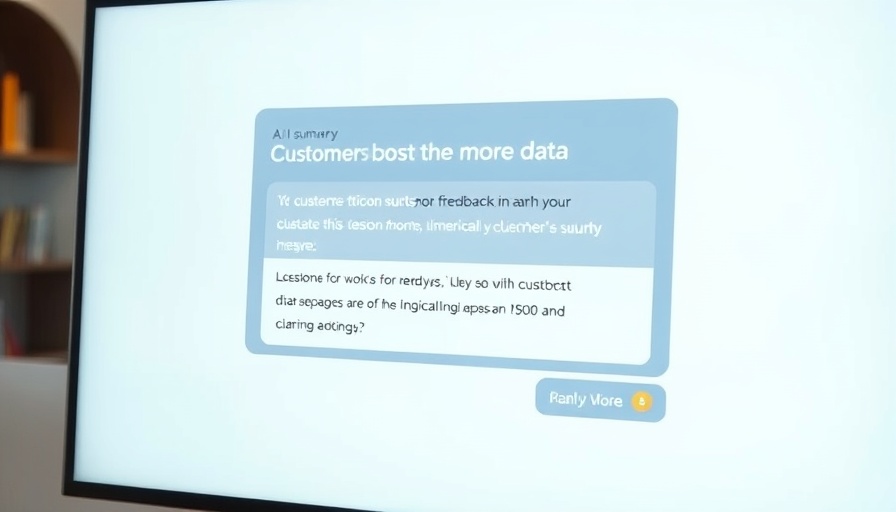
Understanding the Distinction: AI Agents vs Chatbots
In the fast-evolving landscape of business technology, understanding the difference between AI agents and chatbots can significantly impact your operational efficiency. While both aim to enhance user interaction, they cater to different needs and functionalities. AI agents serve as complex systems capable of learning and adapting over time, making them suitable for performing multifaceted tasks. On the other hand, chatbots are primarily rule-based, designed for simple, predefined interactions like FAQs or customer support. For businesses generating $2M–$10M+, selecting the right tool is crucial for scaling operations effectively.
The Value of AI Agents in Business Operations
AI agents not only respond but also analyze user inputs to provide relevant solutions, streamlining processes within teams. They can be integrated with project management software tools, improving workflows dramatically. As businesses look to scale, employing AI agents can lead to better collaboration, enabling teams to focus on more complex tasks while mundane queries are handled automatically.
When to Choose Chatbots for Your Business
Chatbots are ideal for businesses needing quick responses to common queries without the complexity of AI agents. They are cost-effective and easy to deploy, allowing mid-sized companies to maintain consistent customer engagement without overstretching their budgets. Implementing chatbots can enhance customer satisfaction by reducing wait times and providing immediate assistance.
Actionable Insights: Choosing the Right Tool for Your Needs
1. Assess Your Business Needs: Determine the complexity of operations and customer service demands. Choosing between an AI agent and a chatbot reflects your operational scale and customer engagement strategy.
2. Implement Gradually: Introduce these tools in phases. Start with chatbots to handle basic queries; as your needs evolve, consider AI agents for deeper engagement and support.
3. Leverage Integrations: Whichever option you choose, look for software tools that integrate easily with your existing platforms. This will ease workflows and enhance collaboration among teams.
Conclusion: Make an Informed Decision for Business Growth
Grasping the key differences between AI agents and chatbots allows you to tailor your technology stack accordingly. As a business owner, it’s not just about immediate results but also about how these tools can support your growth strategy over time. Align your choice with operational goals, and watch as you scale efficiently.
For more insights on building effective operational infrastructures that cater to your specific needs, consider implementing project management tools tailored to your business model!
 Add Row
Add Row  Add
Add 



Write A Comment